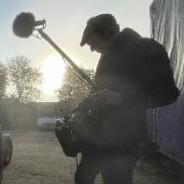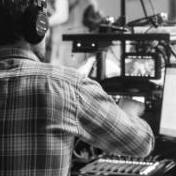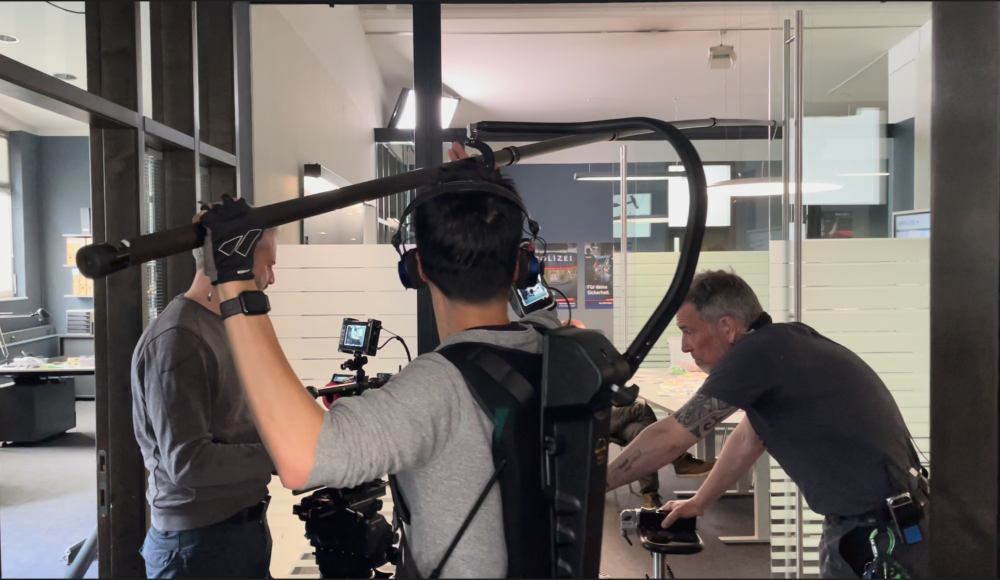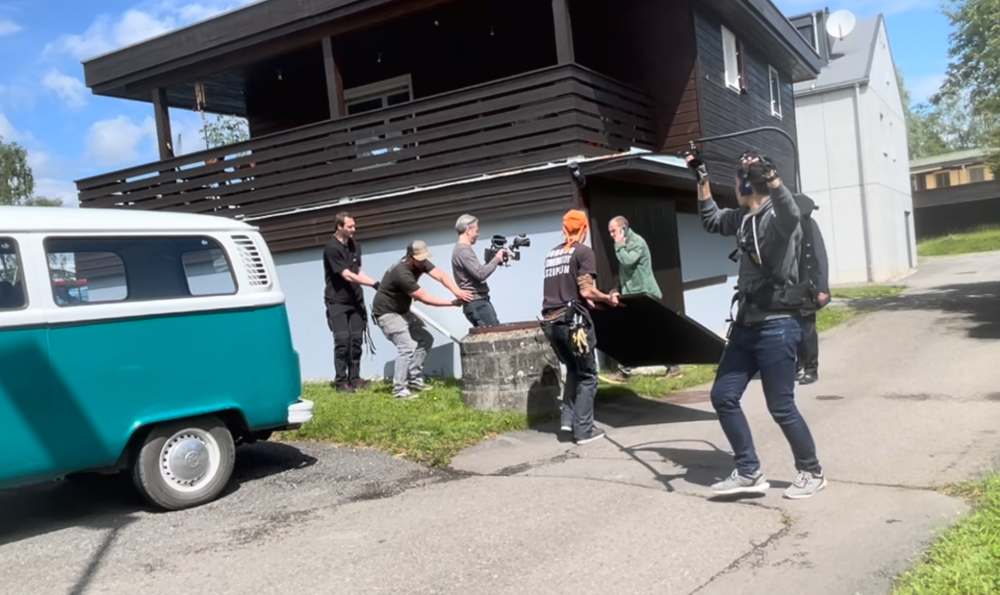-
Posts
97 -
Joined
-
Last visited
-
Days Won
2
Contact Methods
-
Website URL
http://www.tongaudio.at
Profile Information
-
Location
Vienna
-
About
Sound Mixer for Film and Television
http://www.tongaudio.at -
Interested in Sound for Picture
Yes
Recent Profile Visitors
10,111 profile views
-

Problem with Sony FX3 + Atomos Ninja
Tong0615 replied to Tong0615's topic in Cameras... love them, hate them
TC was feeding into the FX3 via micro-USB Cable, but there's a splitter box between tentacle and FX3 because the 1AC needs to roll camera via Remote, the remote signal also goes into the micro USB (so the TC and Remote went into splitter box, and then into the micro USB port). After 4 shooting days, the production had to replace the FX3 with an FX6 due to a latency problem for the 1AC, which caused problems with getting the picture in focus. With the FX6 BNC TC Input, timecode was fine for the rest of the project. -
I'm on a shooting now with a Sony FX3 and Atomos Ninja external recorder, all the images are recorded in the external Ninja recorder. I'm using a Zaxcom Nomad, TC comes from external tentacle sync, one is feeding my recorder and a second one feeding the camera. However, the editing room reported the image and sound were frequently out of syn, the offset was not constant, it varies from -12 frames to +10 frames. Has anyone had similar experiences with this combination?
-
I think they are not repairing small parts like MXZ and MZF from the beginning. I had some issue with my MZF, went to Sennheiser directly (I‘m in Vienna, Sennheiser has an office here). They didn’t repair it but gave me a discount to buy a new one, it was 2014. Last year I sent my MKH8060 in for repair, even the mic was already 10 years old and out of warranty, they repaired it for free.
-
Just make sure it's not being misunderstood, you can boom from both sides when using BoomRig, only switching side on the fly (during take) is not possible. I do switch sides on documentary works when I have to go from one side of the camera to the other side of the camera, and this is not possible with the boomrig. You can push/pull the boom pole (I think even more compared to without the Boomrig), it doesn't make any noise when you push the boom pool forward or backwards on the rubbers, and the arm also moves in the forward/backward direction for about 30cm. Since most of the crew knew about the camera easyrig, they were not so surprised. But they were interested in how it works, especially the camera and grip department.
-
I tried the Boomrig for one day in a real filming situation. My very first impression: The Boomrig is very helpful in some situations, but it requires the Boom Op to adapt their way of booming, and requires curtain adaptation in the sound team. Pros: Very easy to wear and setup, it took me less than 1 minute to put it on. The compact design allows use it indoors, the arm can be lowered, which is very practical to move around between takes. The adjustable load is very practical for all kinds of microphones and shock mounts. In Situations such as long takes, Steadicam walks, and wide shots, the Boomrig helps to reduce the load on shoulders and back significantly. In a Steadicam walk situation, I don't need to pay attention to my supporting arm and weight balance so much, but can fully concentrate on getting the microphone to the spot. That was a huge surprise for me. It's effortless to do a long take, I didn't feel anything on my arm after a long take with fully extended boom. It worked very well when turning the microphone from one side to the other, the two small wheels in the hook are silent and fast. The swing-arm is also responsive and quiet, worked surprisingly well when I needed to change position from above to low. The arm can also move in the forward/backward direction for about 30cm, and it is also possible to "slide" forward or backward when it already sits in the hook, the rubbers on the wheel doesn't make any noise. Cons (or things I still need to figure out) The Boomrig requires adjustment for load/tension after each adjustment of boom, which can be problematic for a 2-men crew (sound mixer + boom op). If the load is not properly adjusted, the freedom of movement can be very limited, and that can cause missing cues. Even though the Boomrig has a compact design, it is still nearly impossible to use it in a low-ceiling situation. The design of the right-sided arm is a bit limiting, It took me a while to learn how to boom from both sides with this arm. It took me a bit of struggle to get the boom pole into the hook every time when the boom pole is extended. It is very difficult or almost impossible to adjust the length of the boom pole when it's in position. The forwards-backwards movement is a bit limited due to the design of the arm. The Up-Down movement is still a bit difficult to get under fully control for me after using it for one day. It is not so easy to get the right load, and when it's not properly adjusted, I need to fight with the Boomrig actively. After one day, I'm still not able to do fine detailed movement with the Boomrig, for shoots, where I need to do fine movement and be very precise, I had to do it without the boomrig. Switching sides during take is not possible (could be problematic for documentary work) Overall, after the first day, I would recommend the Boomrig to all Boom Ops, even though it has some limitations, it reduces the load from Boom pole on the arms and back significantly without losing too much flexibility. I will keep testing the Boomrig this week, and will make more reviews. Please also let me know if you have any questions or some thoughts related to the test. Thanks.
-
It would be interesting to see a comparison between BoomRig and Exoskeletons.
-
I smell some kind of "racism" here, non US/EU brands is not equal to "low quality / bad image"! To be honest, our industry has been ruled by US and EU companies forever, I would love to see if there could be a chance for a cooperation between companies like Zoom and Aaton, developing more reliable and affordable machines. I think the cooperation between Steinberg and Yamaha is a positive example. The Zoom F8 series are fantastic products at a relative low price. They gave many people the opportunity to get into the world of cinematic sound, those couldn't afford it before such machine existed. But since here is about Aaton, let's give it a hope that Aaton can find an investor and keep making one of the best machines for the industry.
-
Let's not forget Sonosax, they also make fantastic recorders and mixers, and well-suited for drama/theater use.
-
I had today some people came to my home to paint the walls, and they were using a kind of exoskeleton system to support their arms when they were painting the ceiling. This made me thinking, if we can use such system for boom operating. There are electric powered systems and non-electric mechanical systems. Has anyone have ever tried such systems or any experience? One of the systems I found is this electric-powered one, it's pretty expensive, but looks interesting.
-
It's a personal preference thing, all the brands you named, K-Tek, Ambient, VdB, Panamic make solid boom poles, they can all get the job done very well, maybe go to a local store and try them out. Personally, I use VdB because they were the first one who introduced the Quarter-Turn system (I have worked many years with ambient poles before I got my VdB, always had some issues with the locking system). And their Boom Pole is a bit lighter than Ambient, and the VdB has Quick-Lock system built in. As I'm based in Europe, service and replacing parts are easier to get from VdB compared to K-Tek.
-
I'm not sure if it's the same cause, but with nomad, it needs about one second for the machine to get the timecode after the whole booting up screen is done (apply to both internal and external tc source). If you start rolling right after the machine boots up, it didn't get the timecode yet and will start at 00:00:00:00. This happened to me several times.
-
Neumann KH120ii (they just announced a new version) is in my option the best for small studios, it’s not overpowered, has a bit of this cinema „horn“ character. I combine them with a Genelec Sub (which allows 5.1 configuration), you can also go for a while Genelec setup. I use Genelec 8020 at home for some very small emergency editing stuff.
-
Almost, that was a project about the wind "Bora" in Croatia, was physically extremely challenging, (The local people said they measured 235 km/h at that night, the exact spot we were shooting might not be so strong but was still extreme) I felt very fortunate that beside the Pianissimo I had the Cyclone with me, otherwise would not be possible in that situation.
-
I hope they could make it as a replacement for timecode slate. For example, by pressing a button, the display shows some image for one frame, with a tone signal. That would make it much more useful than just a timecode display bar, in my opinion.
-
I partially replaced my Pianissimo with Nano Shield, with the Nano Shield I can switch between Sennheiser MKH8060 and MKH8050 by only switching the shield module, that gives me a lot more flexibility compared to the pianissimo. And the Nano Shield is lighter than the Pianissimo. About the handling noise, I just need to adapt my way of booming and know what kind of movements I need to avoid, that's not a big issue. It was the same with Pianissimo MS Setup. Once I was working on a film about wind, the Pianissimo with MKH8060 did not survive under the 230km/h wind situation, but the Cyclone from Rycote with MiniCIMIT did the job. I would say, see what one can improve with the booming technique before blaming the equipment, compared to the old windshield, the Nano Shield is a thousand miles better.








